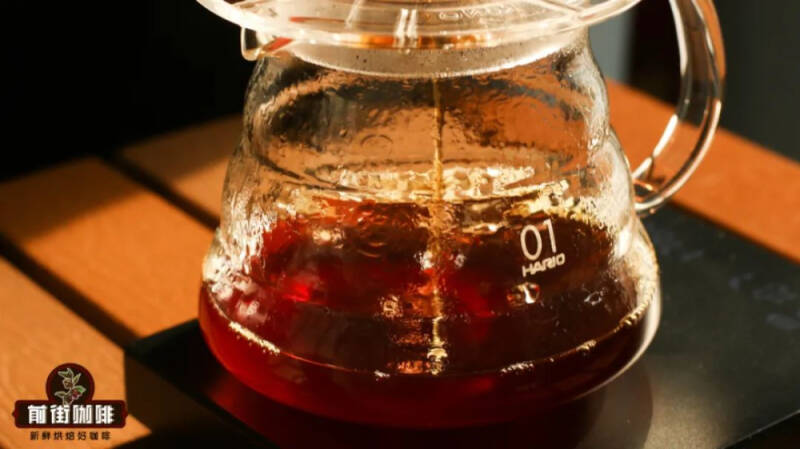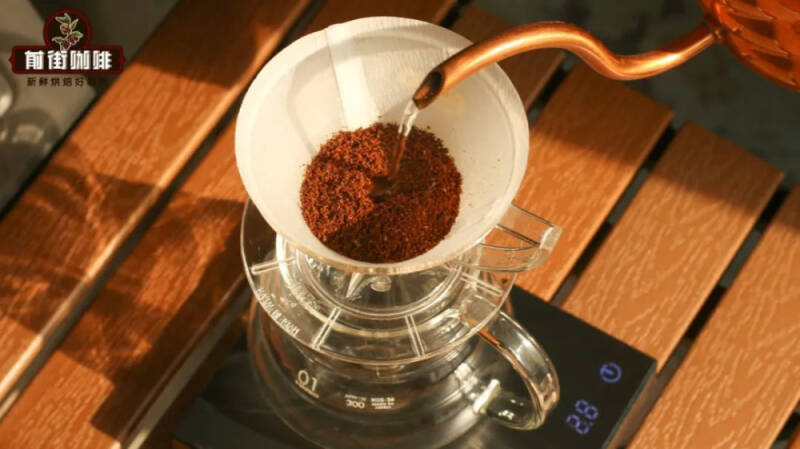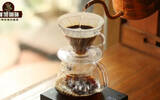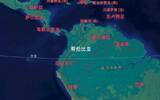How to adjust the strength of coffee? In addition to the ratio of powder to water, what parameters should I pay attention to when making coffee by hand?
Everyone has different tastes and different concentrations of coffee. Therefore, in order to make coffee more in line with their own taste, everyone will adjust the concentration of coffee according to their own preferences. In hand-brewed coffee, the most convenient way to adjust the flavor is to change the ratio of powder to water.

If you want to be thicker, then pour more water, and if you want to be lighter, then pour less water, which is no problem. But the problem is, when you feel that the injected or reduced water still does not extract the concentration you want, and you want to increase the intensity, then the problem comes! The extraction scheme most commonly used in the street in the past is for example. In the Qianjie scheme, the powder-to-water ratio is 1:15. If you want to be thicker, the Qianjie will be adjusted to 1:14 to magnify its concentration. If you want to be lighter, the powder-to-water ratio will be reduced to 1:16, so that the flavor can be diluted, all within the more reasonable scope of this scheme. However, if on this basis, you want to further enlarge / reduce the powder-water ratio, then Qianjie is not recommended to just adjust the powder-water ratio!

The ratio of powder to water is an important part of the current cooking scheme, and every parameter in the scheme is very important, and they are interlinked and indispensable. Therefore, a small change will not have much impact. However, if the adjustment is too large, the extraction rate will also be changed. The change of extraction rate can easily lead to the negative experience of under-extraction and over-extraction for some beans which are not good or resistant to extraction. Therefore, while changing the ratio of powder to water, it is best to make some adjustments in the water temperature, or the degree of grinding. As before, the street extraction scheme as an example, if we want to adjust the ratio of powder to water in the original extraction scheme from 1:15 to 1:13, so that the taste of coffee is very strong, then we have to increase the water temperature or grinding extraction rate. Because the reduction of 2 parts of hot water will incidentally reduce the extraction efficiency of these two parts of hot water, if the grinding / water temperature surface is not adjusted, then the coffee will easily appear the phenomenon of insufficient extraction, such as light weight in front and back, no tail rhyme and so on. So the right thing to do is to increase the water temperature by 1 °2 °C, or fine-tune the grinding by one grid, so that you can increase the concentration and ensure the extraction rate of coffee at the same time.
It is very easy to have a light coffee, which can be adjusted in two ways. The first is that you can dilute the concentration by reducing the ratio of powder to water. However, greatly reducing the proportion of powder and water can easily make coffee extraction too efficient and extract miscellaneous flavors. Therefore, on the basis of reducing the ratio of powder to water, we can appropriately lower the water temperature of 1 ~ 2 °C, or adjust one grind, so as to correct the overflow extraction rate. ~ the second is diluted with water (By pass) after conventional cooking. (Qianjie has just shared it a few days ago, interested friends can turn it forward.
Finally, Qianjie would like to remind friends who mix water: the amount of water in 10~20ml has been able to dilute more coffee concentration. So in By pass, mix it with a small amount of hot water as much as possible, and then decide whether to dilute it after tasting it, so that there will not be a light coffee flavor water because of too much water.
-END-
Important Notice :
前街咖啡 FrontStreet Coffee has moved to new addredd:
FrontStreet Coffee Address: 315,Donghua East Road,GuangZhou
Tel:020 38364473
- Prev

What is the standard for gold cup extraction? How should the extraction rate and concentration of coffee be calculated?
"Gold cup extraction" is a concept that often pops up in the field of hand-making coffee. This word is mentioned from time to time in many coffee brewing teaching courses. Perhaps most Xiaobai friends will feel unfamiliar with it, and often the ones retrieved online are some numbers and pictures that they don't understand very well, so today, Qianjie is just a few years old.
- Next

Colombia| Introduction to the coffee producing area selection series of coffee beans
Colombia In South America, there is a country rich in natural resources and has the world-famous "four treasures": coffee, flowers, gold and emeralds. This country is known as the "Golden Country" and the world's third largest coffee producing country, Colombia (República de Colo
Related
- Being chased out of the rain in front of Starbucks?! Store: Sheltering from rain under umbrellas poses a safety hazard
- The white moonlight has changed?! Lucky launches "Big Winter Pear American"
- Hand-brewed coffee three-stage method, high-sweet and universal brewing method to share! What does the high sweet water level of hand-brewed coffee mean?
- What is the difference between raw, refined and full espresso coffee? How to extract espresso and taste good?
- A complete list of coffee bean names and their meanings! What is Yejia Shefi coffee? Where is Mantelin coffee?
- What grade does Arida Manor Kaduai coffee beans belong to? What treatment is Arida ASD slow anaerobic sun exposure?
- The milk tea cup becomes smaller?! Overlord Tea Girl launches a new "Return to Yunnan" series
- Accused of selling counterfeit and high-priced coffee beans! Well-known boutique coffee brand "Oukelao" bowed and apologized!
- How to make espresso dumplings? Can I eat coffee and glutinous rice balls together?
- Save the unformed and stagnant powder cakes in one second! What is the problem with stagnant water in the powder bowl of the espresso machine?

